Review: DC Finest: Aquaman- The King of Atlantis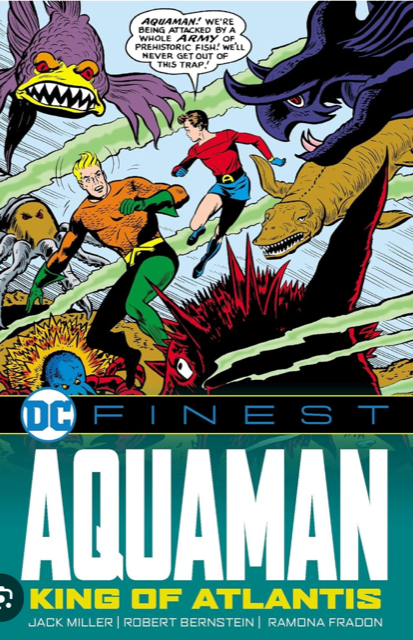 [Editor’s Note: This review may contain spoilers]
[Editor’s Note: This review may contain spoilers]
Writers: Robert Bernstein, Jack Miller, George Kashdan, Jerry Siegel, Otto Binder, Joe Millard and unknown
Art: Ramona Fradon, Nick Cardy, Curt Swan & Stan Kaye, Kurt Schaffenberger, Jim Mooney and Dick Dillin & Sheldon Moldoff
Colors: unknown
Letters: Joe Letterese, John Duffy, Stan Starkman and Pat Gordon
Reviewed by: Matthew B. Lloyd
Summary
DC Finest: Aquaman- The King of Atlantis collects the earliest Silver Age adventures of Aquaman. This includes stories from Adventure Comics #229-280, 282 and 284, Action Comics #272, Detective Comics #293-300, World’s Finest Comics #125, Showcase #30-33, Superman’s Girl Friend, Lois Lane #12 and Aquaman (Vol.1) #1-3.
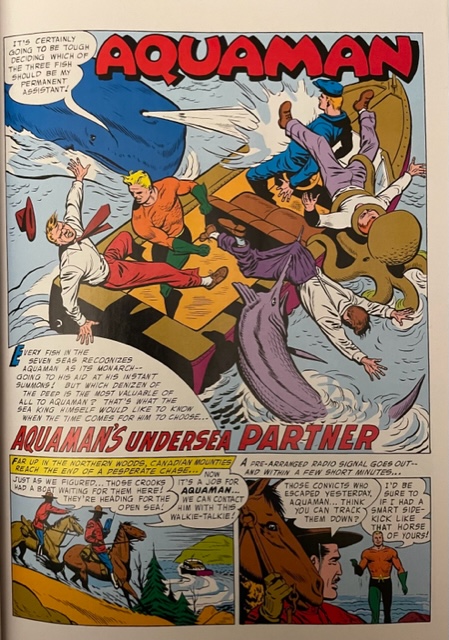
This collection “unofficially” marks the beginning of the Silver Age for Aquaman. Like Superman, Batman, Wonder Woman and Green Arrow, Aquaman is a character that maintained continuous publication through the 1950’s as comics transitioned from the Golden Age into the Silver Age. While it’s easy to see a clear division between the adventures of the Golden Age Flash- Jay Garrick and the Silver Age Flash- Barry Allen, Aquaman and the others who had continuous publication, the cut off for Golden Age stories is much harder to indicate. While Showcase #4 is the comic with which the Silver Age is “officially” inaugurated, it’s not so simple for these other characters. Even the Martian Manhunter, John Jones (J’onn J’onzz) debuted eleven months before Showcase #4 in Detective Comics #225 (November 1955), he is always considered a Silver Age character. Despite first appearing before the “official” cutoff, he is never considered a Golden Age character.
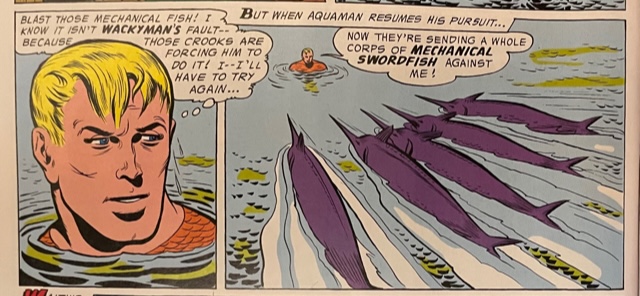
DC Finest: Aquaman- The King of Atlantis puts the earliest stories in the context of this being the Silver Age, but, like a lot of 1950’s comics these are transitional. The reader must think of these stories in that way, he isn’t “the King of Atlantis” at the beginning of this volume. One really should open the book thinking that this is the Golden Age Aquaman with that origin- a fully human child whose scientist-father “taught” him how to live underwater and communicate with fish and whose true name was never revealed, if he indeed ever had one for he was dubbed “Aquaman” by his father in the the first Aquaman appearance in More Fun Comics #73 (1941). This allows the reader to see all the new concepts introduced in the Silver Age, the introduction of Topo, the Octopus, his new origin as 1/2 human/ 1/2 Atlantean, Aqualad etc. Understanding the transitional nature of these stories will provide more insight when we see Aquaman visit an Atlantis in ruins to which he has no connections, as well as his admission that he doesn’t know how he got his powers (a retcon or is he just being coy?).
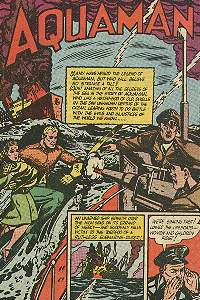
Positives
The historical value of these stories is probably the greatest positive of this collection. It’s not always easy to track the development of a character so clearly. However, Aquaman wasn’t appearing in lots of titles and only a few writers handled the character. These then are the stories that had all the appearances of the character. This volume starts with October 1956 and he wouldn’t appear alongside the Justice League of America in their first appearance in The Brave and the Bold #28 until (cover date) March 1960. That’s over three years of stories with very minimal crossover appearances. Therefore, these area the stories that develop Aquaman from a third tier Golden Age back up character to one of the most recognizable characters published by DC Comics.
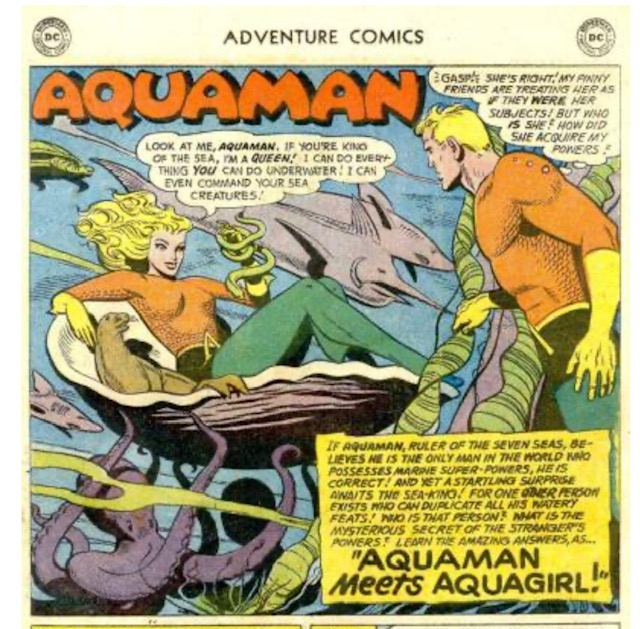
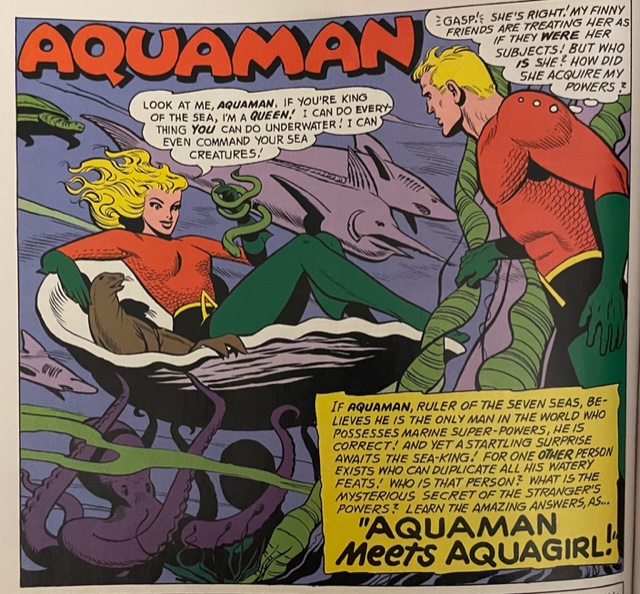
The previous Silver Age collection by DC, Showcase Presents…, started Aquaman’s Silver Age adventures with Adventure Comics #260. This new volume adds 31 more stories from Adventure Comics, plus a couple crossovers with stories from Action Comics and Superman’s Girlfriend, Lois Lane.
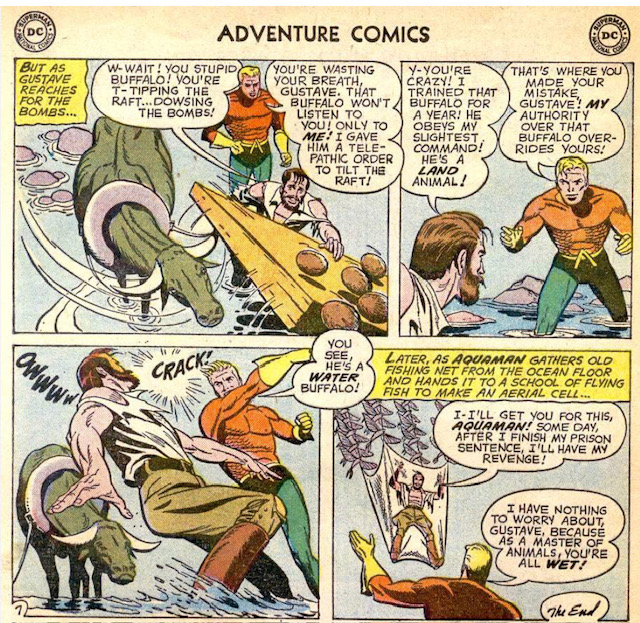
DC Finest: Aquaman- The King of Atlantis features two great comic artists from DC’s history. Ramona Fradon worked on Aquaman for many years before giving way to Nick Cardy when DC moved the character to a higher priority and gave Aquaman a chance at his own series in four tryout issues of Showcase. The Silver Age revamps of the Flash, Green Lantern etc. earned solo titles this way, as well as Lois Lane.
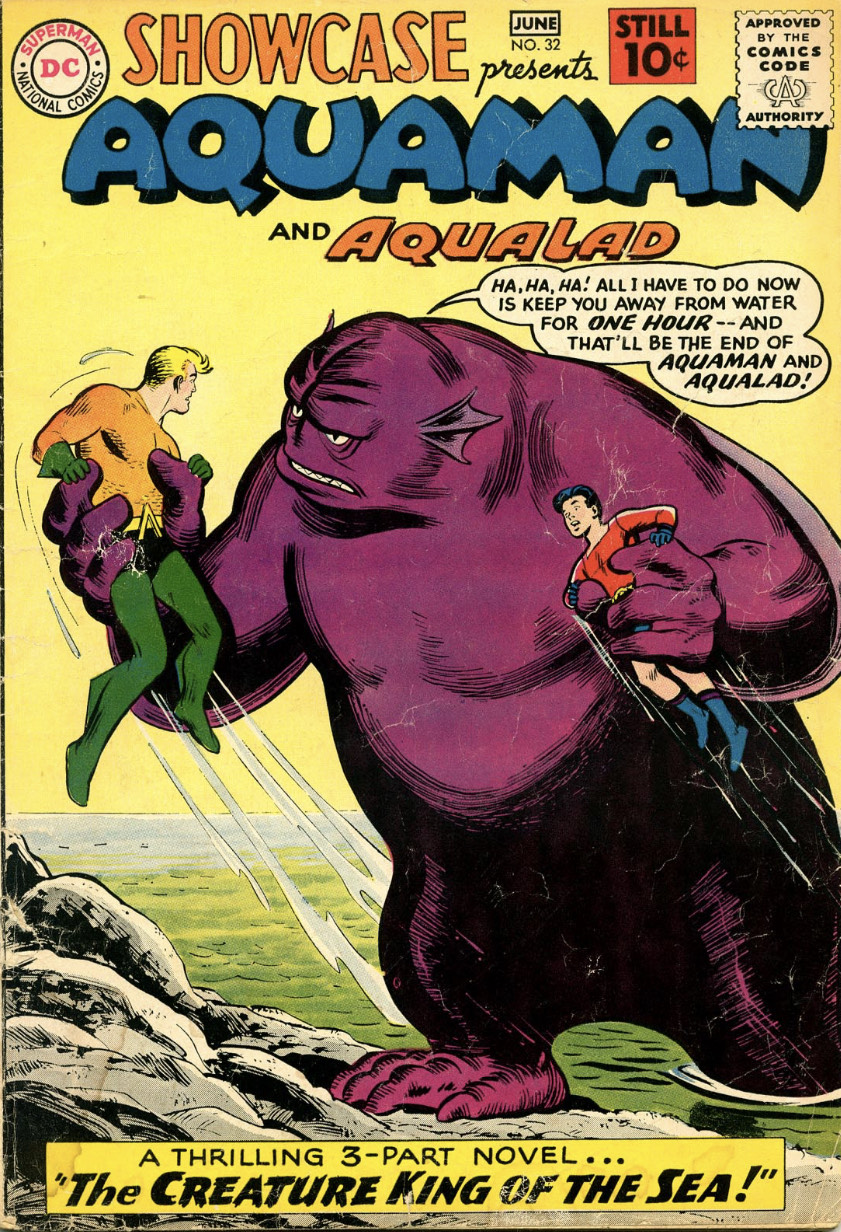
Positives Cont’d
While modern readers may have a greater affinity for Cardy, Fradon excels at movement and expression and demonstrates a great storytelling ability that is critical for the mostly six page stories that she draws. The influence of Milton Canniff is obvious at this stage of her career and it’s a nice snapshot for comparison to her work in the 60’s and 70’s on Metamorpho, Plastic Man and SuperFriends.
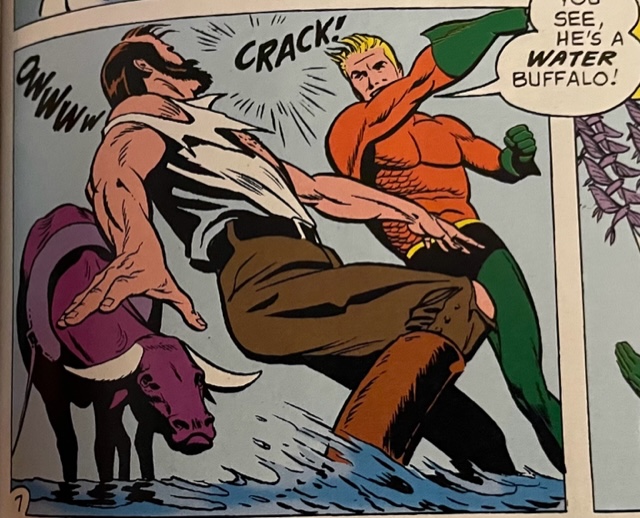
Cardy is one of DC’s best ever and this collection has moments of brilliance, though his best work was yet to come later in the ’60’s on both Aquaman and Teen Titans as well as the numerous covers he would provide from the late ’60’s well into the 1970’s. The art never disappoints!
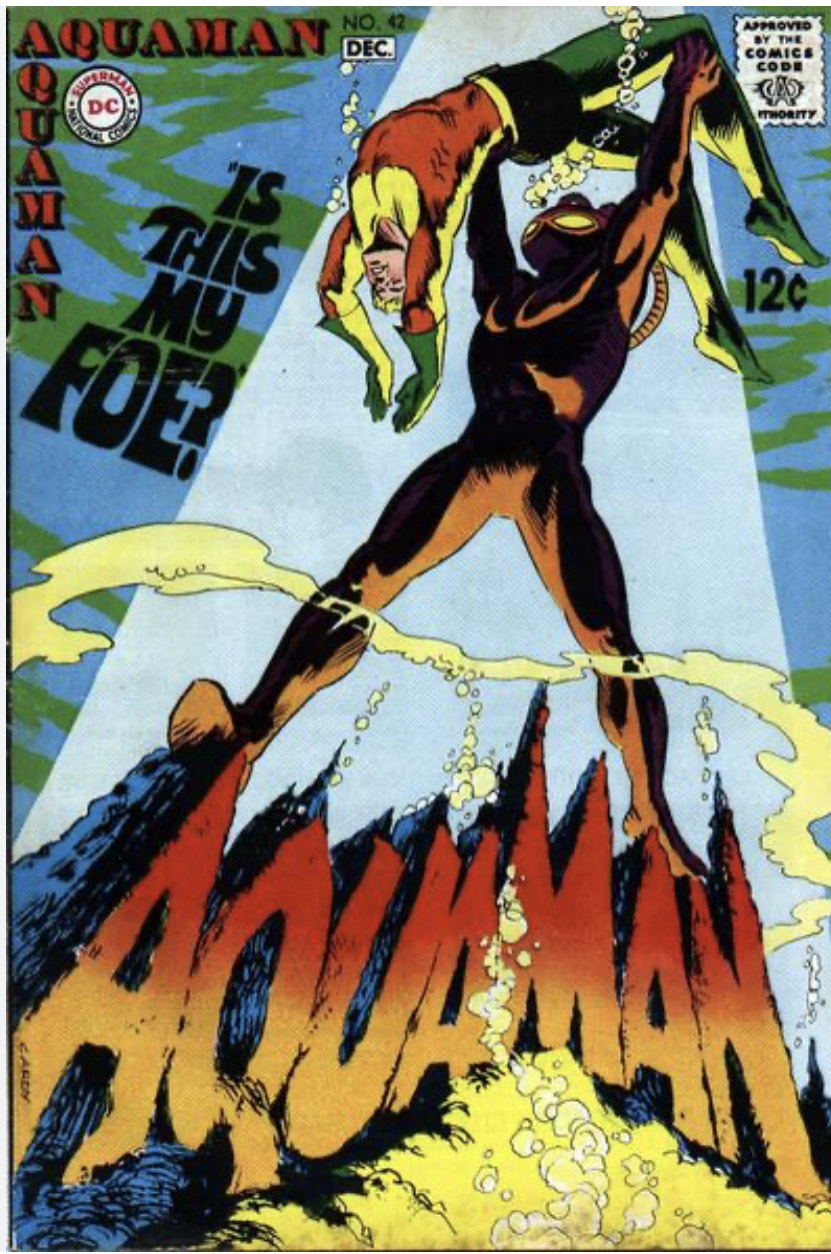

One of the most compelling aspects of the stories in this volume concerns the approach to Aquaman in universe. He is anything but a joke, and he is regarded very highly by the Army, the Coast Guard and all manner of nautical businesses and law enforcement agencies. Instead of combatting a villain of the month with a large range of costumed villains, he is essentially seen as a protector of the oceans. Aquaman faces smugglers, rogue scientists, common criminals as well as threats natural (and unnatural) to both humans and denizens of the deep. It doesn’t quite go “ecological,” but it’s just a step or two away. This is an element of the character that is rarely explored, even in today’s comics. In the ’90’s, the volume of Aquaman by Shaun McLaughlin made the attempt to do this, but it didn’t last long. These old stories show how the character can be positioned as a protector of not only the ecology of the ocean and its inhabitants, but also the people who venture out into the seas and oceans of the world. It’s a take that would benefit from another try. These stories come up with some creative ideas to challenge Aquaman. These stories also find ways to keep Aquaman in the water and rarely rely on him coming on land to solve the issue at hand.

Negatives
While this volume includes the first appearance of Topo, the name “Arthur Curry,” the Silver Age origin and Aqualad, it doesn’t include the first appearance of the most obvious visual cue that separates the Golden Age Aquaman from the Silver Age character- the Yellow Gloves!

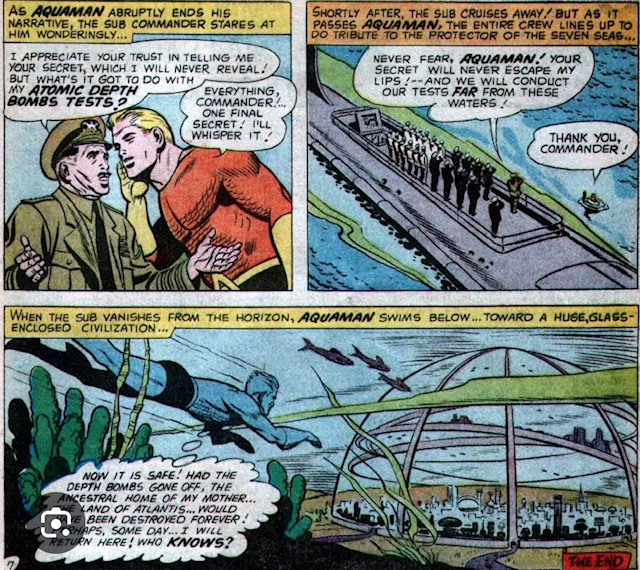
When Aquaman debuted in the Golden Age in More Fun Comics #73, he was depicted with yellow, not the green gloves which are considered to be part of his iconic and most well known costume. The yellow gloves were used throughout the Golden Age and didn’t appear until issue #211 of Adventure Comics. In 1946 Aquaman and the other super-heroes in More Fun migrated over to Adventure Comics, leaving Aquaman’s first home as a humor book that matched the title. Unfortunately, DC Finest: Aquaman- The King of Atlantis doesn’t reprint any of the stories with yellow gloves, despite many of them having originally been published with the yellow gloves originally. For quite a while the green and yellow gloves flip flopped in his appearances. As a matter of fact, the original coloring for the gloves in the first JLoA appearance in Brave and the Bold #28 is yellow, yet the reprints always use green. A recent facsimile edition does show the original yellow on the cover, but not on the interior. There has been some indication that it was a color separator error, but there’s no doubt that Aquaman originally had yellow gloves and that the issues as published did appear yellow and not green. This is a detail that would’ve been appreciated. It may not impact the stories, but yellow gloves would remind the reader of the transitional phase of the visual appearance of the character and been a more accurate depiction of how these stories looked when they originally appeared.
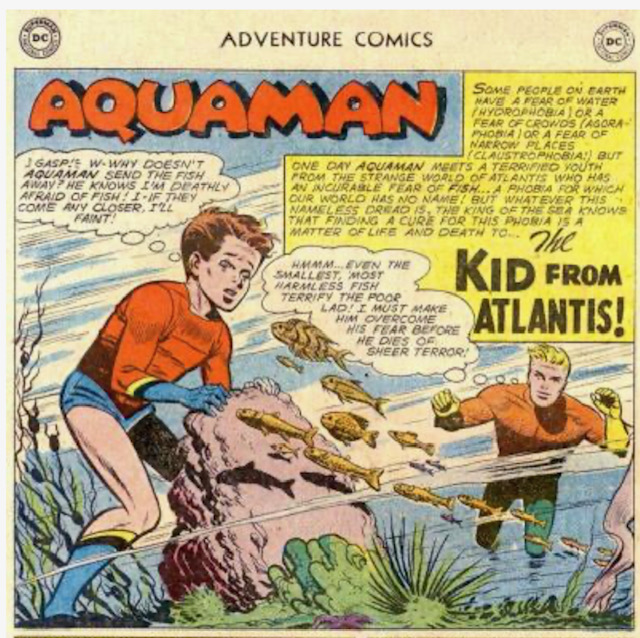

These stories may not appeal to modern readers. They are short, fairly basic and lacking in subtlety and nuance. But, that’s what comics were like at the time. It was a different audience then, also. Readers were probably almost all under 13 and comics were just seen as simple entertainment at best.
Verdict
DC Finest: Aquaman- The King of Atlantis is a wonderful historical document that shows the development of the character of the Golden Age and into the Silver Age with the introduction of attributes one associates with classic Aquaman. These stories are fun, visually satisfying escapes to the past that can be enjoyed today, that present an Aquaman who is just as significant “in world” as he’s ever been.
